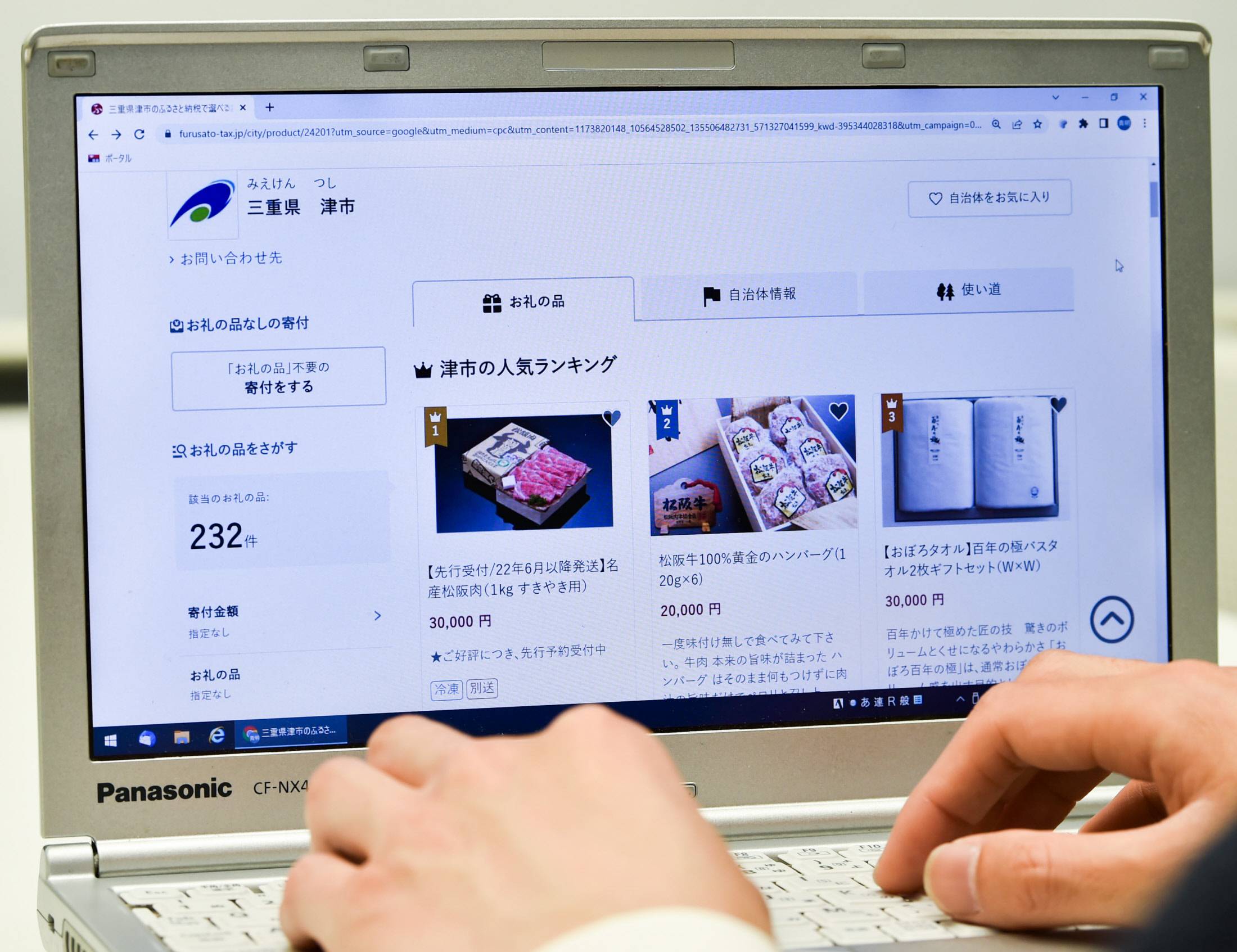The use of the furusato nōzei hometown tax donation system, under which people give tax-deductible donations to municipalities and receive gifts such as local specialties in return, has been growing as many spend more time at home amid the COVID-19 pandemic. But not all municipalities are benefiting from the program.
In Mie Prefecture, the municipal government of Tsu, the prefectural capital, saw the value of such donations to the city in fiscal 2021 mark a record high for a fiscal year as of the end of February. However, after deducting the taxes of citizens who made donations to other municipalities, the city’s budget deficit is likely to expand.
Meanwhile, some other municipalities in the prefecture are successfully boosting their budget surplus by conducting promotional campaigns and offering more attractive items as return gifts.

















With your current subscription plan you can comment on stories. However, before writing your first comment, please create a display name in the Profile section of your subscriber account page.